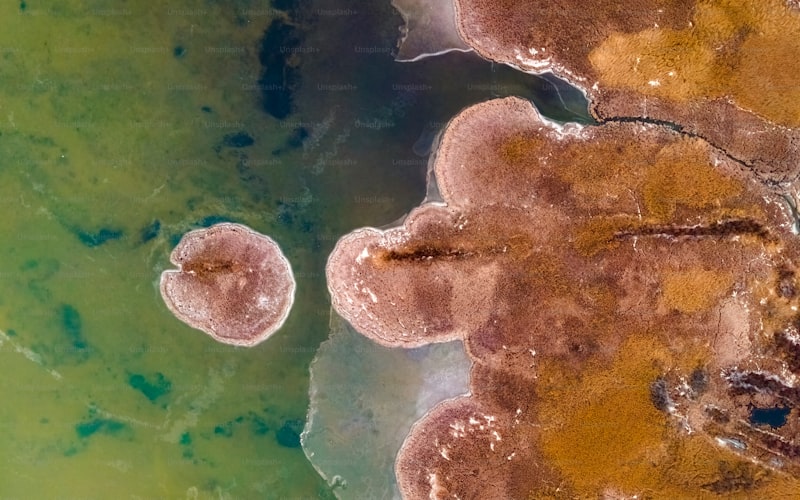Estuaries, where freshwater rivers meet the salty embrace of the sea, host a diverse array of species ranging from microscopic plankton to majestic birds and fish. Each species adapts uniquely to the fluctuating salinity, temperature, and nutrient levels characteristic of estuarine waters. Through molecular ecology, scientists trace the genetic markers that help these species thrive in such dynamic environments.
Picture a mangrove forest along the estuary’s edge, where mangrove trees stand as sentinels against the tides. Molecular ecologists explore how these trees, with their intricate root systems submerged in brackish water, manage to extract nutrients and endure changing conditions. By analyzing the genetic diversity within mangrove populations, researchers gain insights into their resilience to climate change and human impacts.
Further into the estuary, where the currents slow and sediment settles, lie vast beds of seagrasses. These underwater meadows provide shelter and food for countless marine creatures. Molecular studies unravel the genetic adaptations that allow seagrasses to thrive in low-light conditions and withstand the pressures of nutrient runoff and sedimentation.
Estuarine habitats also serve as nurseries for fish and crustaceans, crucial for coastal economies and biodiversity. Molecular ecology sheds light on the connectivity between different populations of these species, highlighting migration patterns and the impact of environmental changes on their genetic health.
Exploring Genetic Diversity: Molecular Insights into Estuarine Ecosystems
Estuarine ecosystems, where freshwater rivers meet the salty sea, are dynamic environments teeming with diverse life forms. Understanding the genetic diversity within these ecosystems provides crucial insights into their resilience and adaptation mechanisms. Molecular studies offer a deeper look into the intricate web of life that thrives in estuaries.
Genetic diversity refers to the variety of genes within a species or a population. In estuarine environments, this diversity is influenced by various factors such as water salinity, temperature fluctuations, and sediment composition. These factors create unique niches that shape the genetic makeup of resident organisms, from microscopic plankton to larger fish and mammals.
Researchers use advanced molecular techniques like DNA sequencing to unravel the genetic codes of estuarine species. By studying the DNA sequences, scientists can identify genetic variations that enable organisms to thrive in specific estuarine conditions. For instance, certain genes may confer tolerance to varying salinity levels or resistance to pollutants commonly found in estuarine waters.
The genetic insights gleaned from these studies help conservationists and policymakers make informed decisions about managing and preserving estuarine biodiversity. They provide a scientific basis for developing strategies to mitigate the impacts of human activities such as pollution and habitat destruction.
Moreover, understanding genetic diversity in estuarine ecosystems is crucial for predicting how these habitats will respond to environmental changes, including climate change. Genetic studies can reveal whether species have the genetic variability needed to adapt to rapidly shifting conditions or if they may face increased risks of extinction.
How DNA Analysis Reveals the Secrets of Estuarine Biodiversity
Ever wondered how scientists uncover the hidden diversity within estuaries? DNA analysis is their secret weapon, unraveling the mysteries of life in these unique ecosystems. Estuaries, where freshwater meets saltwater, are vital habitats teeming with diverse species. From microscopic plankton to majestic marine mammals, estuarine biodiversity plays a crucial role in ecological balance.
Traditional methods of studying biodiversity often fall short when it comes to capturing the full spectrum of life forms in estuaries. This is where DNA analysis shines brightly. By analyzing genetic material extracted from water, soil, or even the organisms themselves, scientists can identify species more accurately than ever before.
Imagine it like a genetic treasure hunt. Each organism leaves behind traces of its DNA, like breadcrumbs in a forest. Scientists collect these genetic clues and piece together the puzzle of biodiversity. It’s not just about counting species but understanding their interactions, adaptations, and evolution over time.
DNA analysis is akin to unlocking nature’s encrypted code. It reveals hidden relationships between species and unveils new species that were previously unknown. This technology doesn’t just benefit scientists; it enriches our understanding of estuarine ecosystems and underscores the importance of conservation efforts.
Next time you stroll along a shoreline or observe the ebb and flow of tides, think about the myriad life forms thriving beneath the surface. Thanks to DNA analysis, we’re closer than ever to fully appreciating the rich tapestry of life within estuaries. The more we know, the better equipped we are to protect these invaluable ecosystems for future generations.
The Role of Microbial Communities in Estuarine Molecular Ecology
Have you ever wondered about the intricate web of life thriving within estuaries? These unique ecosystems, where freshwater meets the sea, harbor a diverse array of microbial communities that play pivotal roles in estuarine molecular ecology.
Estuaries are like bustling cities teeming with microscopic lifeforms, each contributing to the delicate balance of this ecosystem. From bacteria to archaea and fungi, these microbes form intricate networks that regulate nutrient cycling, carbon fixation, and even influence climate patterns through their metabolic activities.
One of the key players in estuarine microbial communities is bacteria. These tiny organisms are the workhorses of the estuary, breaking down organic matter into essential nutrients that fuel the entire ecosystem. Through processes like nitrogen fixation and sulfur cycling, bacteria ensure that vital nutrients are available for the growth of plants and animals alike.
Archaea, another group of microorganisms found in estuaries, thrive in extreme environments within these ecosystems. They contribute significantly to methane production and oxidation, influencing greenhouse gas dynamics and overall climate regulation. Their ability to adapt to varying salinity levels and oxygen availability makes them crucial indicators of environmental health.
Fungi, although less abundant than bacteria and archaea in estuarine environments, play essential roles in organic matter decomposition and nutrient cycling. They form symbiotic relationships with plants, enhancing their resilience to environmental stresses and facilitating nutrient uptake.

Understanding the dynamics of these microbial communities is essential for predicting how estuarine ecosystems will respond to environmental changes such as pollution or climate change. By studying their genetic diversity and metabolic capabilities through advanced molecular techniques, scientists gain insights into the resilience and adaptive capacity of estuarine environments.
Microbial communities in estuaries are not just invisible inhabitants but intricate architects of ecosystem health and resilience. Their diverse roles in nutrient cycling, carbon sequestration, and environmental adaptation underscore their significance in estuarine molecular ecology. As we delve deeper into their world, we uncover fascinating insights into the interconnectedness of life in these dynamic coastal habitats.
Adaptation and Evolution: Molecular Mechanisms in Estuarine Species
At the heart of adaptation lies the genetic toolkit of estuarine species. Over generations, these organisms have developed specialized traits to thrive in the challenging brackish waters. Imagine genes as the architects, designing biological structures equipped to withstand salinity changes, tidal fluctuations, and varying nutrient levels. These adaptations aren’t just about survival—they enable thriving in a niche that demands resilience and flexibility.
One remarkable molecular mechanism is gene expression regulation. Estuarine species possess genes that can turn on or off depending on environmental cues. It’s akin to a molecular switchboard, where genes respond swiftly to changes in water quality or temperature. This adaptability allows species to conserve energy when conditions are stable and ramp up defenses when faced with stressors like pollution or habitat alteration.
Another critical adaptation is in the realm of metabolic pathways. Estuarine organisms have evolved efficient biochemical processes to utilize available nutrients optimally. Think of it as a finely tuned engine—capable of extracting maximum energy from diverse diets that vary with the ebb and flow of the tides. This metabolic flexibility is essential for growth and reproduction, ensuring species can capitalize on transient food sources in the ever-shifting estuarine landscape.

Furthermore, molecular evolution in estuarine species involves genetic diversity and natural selection. Populations with greater genetic variation have a higher likelihood of producing individuals better suited to new challenges. Natural selection then acts as a sculptor, favoring traits that confer a survival advantage in the demanding estuarine habitat.
Frequently Asked Questions
How do environmental factors influence genetic diversity in estuarine species?
Learn how environmental factors such as salinity, temperature, and habitat fragmentation impact the genetic diversity of estuarine species, affecting their adaptation and evolutionary responses.
How does genetic adaptation contribute to species resilience in estuarine environments?
Learn how genetic adaptation enhances species resilience in estuarine environments by enabling organisms to thrive amidst fluctuating salinity levels and environmental stresses. Explore how these adaptations help species maintain population stability and ecological balance.
What are the current challenges in applying molecular techniques to study estuarine biodiversity?
Discover the current challenges faced when applying molecular techniques to study estuarine biodiversity, focusing on unique environmental complexities and methodological limitations.
What is molecular ecology and how does it apply to estuarine habitats?
Discover how molecular ecology investigates genetic diversity and ecological processes within estuarine habitats, providing insights into the intricate relationships between organisms and their environment.
What are the key methods used in molecular ecology studies of estuarine ecosystems?
Explore the primary methods employed in molecular ecology research within estuarine ecosystems, focusing on DNA analysis, PCR techniques, and genetic sequencing. These methods illuminate biodiversity, ecological interactions, and environmental adaptations at a molecular level.


